It looks like you're using an Ad Blocker.
Please white-list or disable AboveTopSecret.com in your ad-blocking tool.
Thank you.
Some features of ATS will be disabled while you continue to use an ad-blocker.
share:
stormbringer1701
Thats dated. and it was made of pure scientific pullitoutyourassium in the first place. binary systems can have three areas where stable planets can form and orbit. around either parent star and cicum-binary or around both stars. it all depends on the separation of the stars and thier masses. astronomical observations have since confirmed planets in binary systems are pretty common. and according to updated modelling for example there are actually at least 12 stable orbit solutions in the aplha centauri system at least 4 around each star and up to 4 in circum-binary orbit.
MrInquisitive
From what I have read, binary star systems are not believed to give rise to stable orbits for planets, which would tend to make life -- at least as we know it -- infeasible on such satellites.
Also, if the two stars are 0.06 ly apart, the time for light to travel between them is closer to three weeks, rather than a month.
here is an example: www.nasa.gov...
edit on 5-3-2014 by stormbringer1701 because: added example
That may well be, but for binary and tertiary star systems, it would seem necessary for the stars to be fairly distant from one another in order not to upset a planet orbiting one of the stars. According to Wikipedia the distance between Alpha Centauri and Proxima Centauri is around 0.23 ly, which is nearly four times the distance between the two Zeta Reticuli stars, so it seems more reasonable that the Centauri system stats can hold onto their planets without perturbations from the sister stars better than the Reticuli system.
Moreover, the notion that binary and tertiary star systems yielded unstable planetary orbits was not pulled out of physicists' rears, but rather based on computer modeling, which can do a fairly good job of modeling gravitational systems.
NullVoid
Is there a possibility of these "Circumbinary Planets" exist on Zeta binary system ?, even at further distance ?
I'd hesitate to say it is impossible but it is very unlikely.
About the only way there could be a Circumbinary Planet orbiting both stars is if it were one that was captured because the way these stars and their planets (if any) likely formed would lead to two systems of planets, one around each star due to their wide separation.
Also, the process of a star capturing a rogue planet is probably extremely rare.
So while not impossible it is VERY unlikely.
By the way, I would have said it was impossible until last December when this story about a planet discovered orbiting a star at 650 times the Earth-Sun distance surfaced..
In order for a planet to orbit both stars of Zeta Reticuli it would have to be orbiting them at something at the very least 4,700 times the Earth-Sun distance.
Seems pretty improbable.
If there a possibility to exist, is there a Goldilock position around the system ?
No, such a planet orbiting that far out around both Zeta Ret stars, would be colder than the coldest objects in our solar system.
And orbit shape + time taken to complete can match the Goldilock ?
Orbit would be egg shaped or eccentric like a comet and take at the very least tens of thousands of years to complete one orbit.
If there a suitable condition for life on the Goldilock, how much light will the planet receive ? Bright/Too bright/Dim/etc ?
Well each star of Zeta Ret has it's own Goldilocks zone. A planet in each one would receive about 89-100% of the light we receive from our Sun because these stars both are similar to our sun.
Zeta 1 Reticuli has a luminosity of 0.69 or around 70% that of our Sun. If you put the Earth in the middle of the habitable zone of Zeta 1 Reticuli it would have the amount of light and same temperature it has now but the Zet 1 Ret sun would be slightly dimmer. Zeta 2 would be bright but would not really affect life on a planet around Zeta 1.
Zeta 2 Reticuli has a luminosity of 0.985 or around 99% that of our Sun. If you put the Earth in the middle of the habitable zone of Zeta 2 Reticuli it would have the same amount of light and same temperature it has now and the Zet 2 Ret sun be nearly identical in brightness to our own Sun. Zeta 1 would be bright but would not really affect life on a planet around Zeta 2.
Were Earth magically transported to the same position within the habitable zones of either star of Zeta Reticuli. Most people would not notice the difference in luminosity at all other than the other bright star in the sky.
I used this Habitable Zone Calculator tool from my university (UW - Go Dawgs!) to calculate a planet like Earth would need to be from Zeta 1 Ret since it is slightly dimmer and slightly cooler than our Sun while Zeta 2 Ret is nearly identical for this purpose:
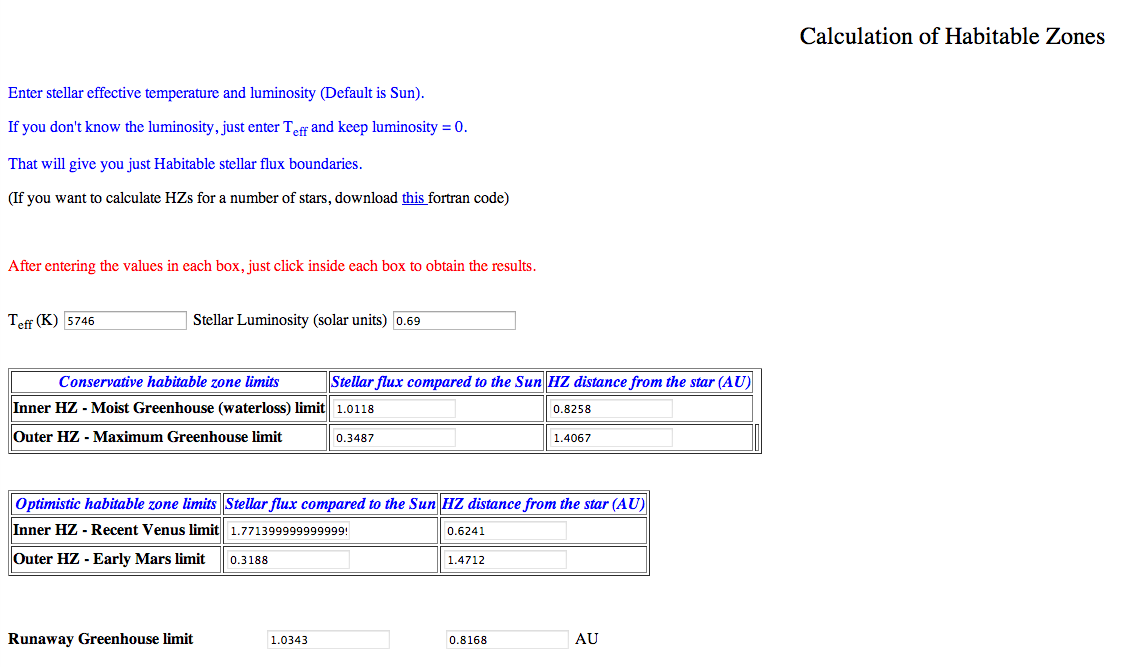
It turns out the optimal distance would be around 0.90AU - 0.95 AU from Zeta 1 Ret. Or 90-95% the distance of the Earth from the Sun.
Here's what a sunset might appear like as Zeta 1 Ret set at different places on our fictional planet which I've named:

Here it is on a Habitable Zone gradient featuring the Earth and some real life exoplanets:
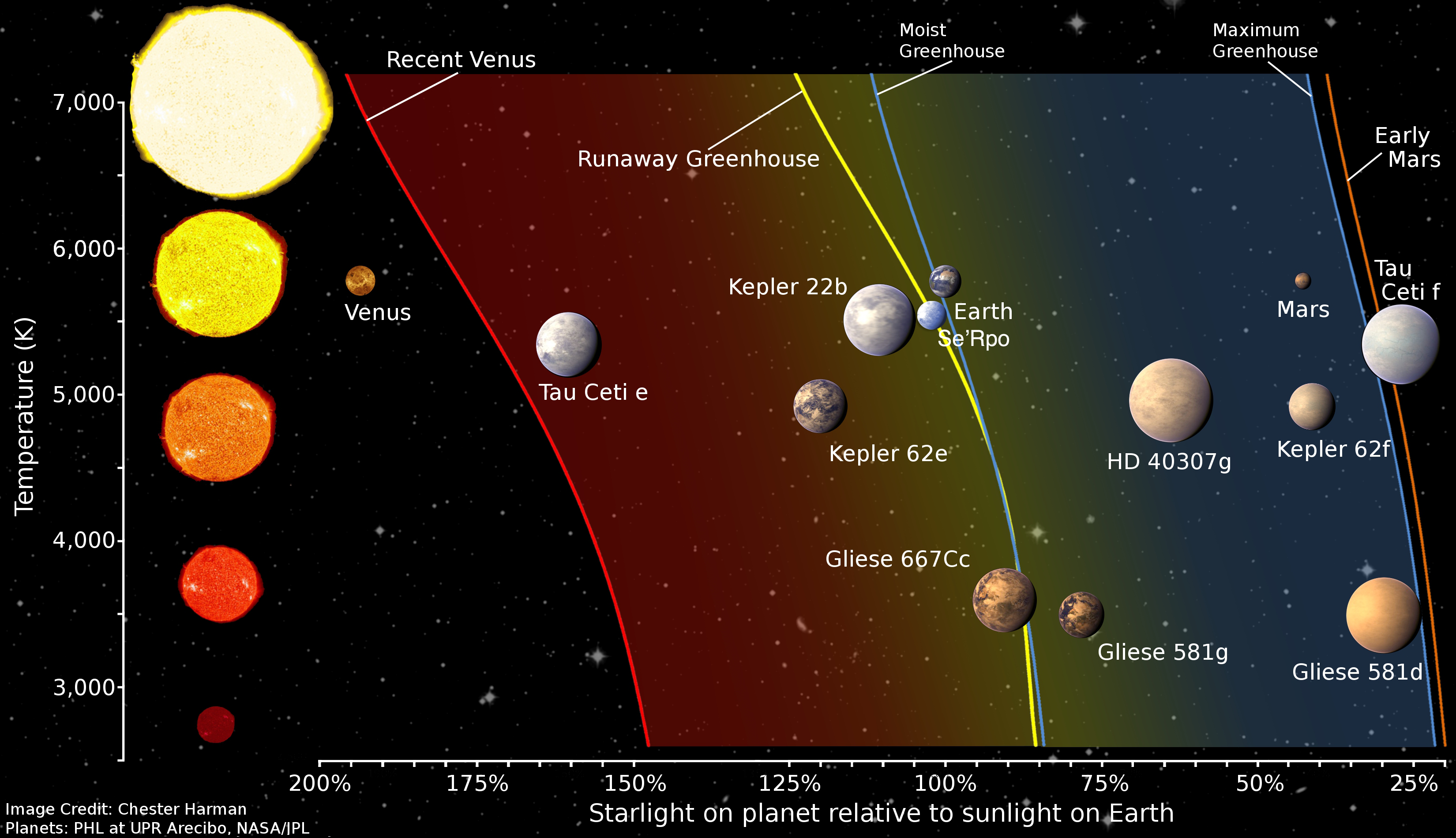
Just below the Earth.....
And here are some sunset simulations from different points on such a planet (Zeta 1 would set while Zeta 2 would still be visible for awhile before setting too):

From a different place on "Se'Rpo":

And our distant Sun as viewed from "Se'Rpo":

Would be one of many dim stars....

The Gray was mentioned as having big eyes. From my perspective, big eyes meant the opposite, it was developed on a naturally dimly lit environment, which require creatures to have bigger eyes and due to low light level, sonic/telepathic/other awareness are more important than visual unless you have - big eyes,
Comparable to our bat/owl/other nocturnals.
Excellent observation.
If the Greys/Grays were real, from an astrobiological / evolutionary biology perspective they would be from a world about 1.3-1.6 times the size of the Earth (a "Super Earth") orbiting a dim red dwarf star.
Interestingly there are some habitable zone planets and planet candidates nearby which would qualify (Gliese 581g for example)
I'm just curious about the possibility, I dont think they came from there but as you already mentioned above...lots of referring to that stars..
It's good to be curious. Curiosity is the engine that drives science and scientific progress. In my opinion too many people lose their curiosity as they grow older. If necessity is the mother of invention, then curiosity is the father of innovation.
edit on 5-3-2014 by JadeStar because: (no
reason given)
edit on 5-3-2014 by JadeStar because: (no reason given)
edit on 5-3-2014 by JadeStar because: (no reason
given)
edit on 5-3-2014 by JadeStar because: (no reason given)
well if the dimmer star is 1/3 the size of the brighter one and the brighter one is about the size of the sun that puts it in the (admittedly largish) red dwarf zone as far as mass goes. so it would not have a g or k type gravitational influence zone. besides there are sorts of weird-sauce factors that go into life zones and all of that. like for red dwarfs the life zone is closer to the star than mercury is to our own sun.
MrInquisitive
stormbringer1701
Thats dated. and it was made of pure scientific pullitoutyourassium in the first place. binary systems can have three areas where stable planets can form and orbit. around either parent star and cicum-binary or around both stars. it all depends on the separation of the stars and thier masses. astronomical observations have since confirmed planets in binary systems are pretty common. and according to updated modelling for example there are actually at least 12 stable orbit solutions in the aplha centauri system at least 4 around each star and up to 4 in circum-binary orbit.
MrInquisitive
From what I have read, binary star systems are not believed to give rise to stable orbits for planets, which would tend to make life -- at least as we know it -- infeasible on such satellites.
Also, if the two stars are 0.06 ly apart, the time for light to travel between them is closer to three weeks, rather than a month.
here is an example: www.nasa.gov...
edit on 5-3-2014 by stormbringer1701 because: added example
That may well be, but for binary and tertiary star systems, it would seem necessary for the stars to be fairly distant from one another in order not to upset a planet orbiting one of the stars. According to Wikipedia the distance between Alpha Centauri and Proxima Centauri is around 0.23 ly, which is nearly four times the distance between the two Zeta Reticuli stars, so it seems more reasonable that the Centauri system stats can hold onto their planets without perturbations from the sister stars better than the Reticuli system.
Moreover, the notion that binary and tertiary star systems yielded unstable planetary orbits was not pulled out of physicists' rears, but rather based on computer modeling, which can do a fairly good job of modeling gravitational systems.
reply to post by Maverick7
When did JadeStar bring up MilAbs or the Betty and Barney Hill case? Did I miss that in the OP?
This thread obviously took a lot of time and energy to put together but it seems there are ALWAYS one or two trolls who try to tear threads like these apart.
When did JadeStar bring up MilAbs or the Betty and Barney Hill case? Did I miss that in the OP?
This thread obviously took a lot of time and energy to put together but it seems there are ALWAYS one or two trolls who try to tear threads like these apart.
reply to post by JadeStar
JadeStar, could you share how you took the photo in your OP? It, and the thread in general, is really great and chock full of information that is new to me. Thanks for the lesson on ZR!
JadeStar, could you share how you took the photo in your OP? It, and the thread in general, is really great and chock full of information that is new to me. Thanks for the lesson on ZR!
reply to post by JadeStar
Thank you, your answer mostly agree with my hypothesis. I'm lacking in astronomy calculation, simulation and common knowledge. What's new I learned from your post and my new hypothesis ?.
Possibility of twin star to capture a circum planet - very low
(if a planet captured, it will be a very very long time for it to complete its orbit - speed super slow)
Possibility of goldilock zone to a twin star system, with distance like ZR pair - None
(other star pair still have possibility though, depending on the stars distance)
Orbit shape is as I expected - egg/oval, thus, even with goldilock zone, the planet will not fully in the zone.
You mentioned possibility of 2 goldilocks on both stars, and it will be like our sun brightness and the other a bit dim.
If they're from our Serpo, they most probably have our look, but a bit smaller in size.
Their eyes would be smaller like us - Different from story
Height will be smaller, due to Serpo gravity - Same as story
Their heads should be smaller, due to higher gravity on bigger Serpo - Different from story
However the most supporting factor is geology, orbiting between between 2 heavenly bodies is NOT stable. From your Serpo simulation, we can even see the 2 stars - not good sign at all. We can expect volcanoes by the second if not minutes).
So...
No habitable planet can exist orbiting the 2 star.
Serpo is on "Runaway Greenhouse" (?, what the effect ?)
Serpo will have terrible volcanoes problems and seasons extreme, due to its egg shaped orbit.
With all these observations and if Serpo have balance orbit like Earth (50/50), it probably will have
Aphelion - 2 share of year - Slow extreme winter with volcanoes spewing
in between - 4 share of year - Moderate temperature earth like session, less volcano eruption.
Perihelion - 2 share of year - Fast hot summer flood and even more volcanoes eruptions
With these geography/seasons, they should have furs/blubber and have time to shed it and later furless/skinny. Like we do to sheep.
Am I correct guys ?
Anyway I dont think Gray from there, they dont use mouth and that alone show they are tailor made, not planet stuff.
BTW, The real reason I ask about cimcum planet is to avoid the varying gravity pull and achieve almost circle orbit. Just to support a "properly habitable" planet hypothesis.
Thank you, your answer mostly agree with my hypothesis. I'm lacking in astronomy calculation, simulation and common knowledge. What's new I learned from your post and my new hypothesis ?.
Possibility of twin star to capture a circum planet - very low
(if a planet captured, it will be a very very long time for it to complete its orbit - speed super slow)
Possibility of goldilock zone to a twin star system, with distance like ZR pair - None
(other star pair still have possibility though, depending on the stars distance)
Orbit shape is as I expected - egg/oval, thus, even with goldilock zone, the planet will not fully in the zone.
You mentioned possibility of 2 goldilocks on both stars, and it will be like our sun brightness and the other a bit dim.
If they're from our Serpo, they most probably have our look, but a bit smaller in size.
Their eyes would be smaller like us - Different from story
Height will be smaller, due to Serpo gravity - Same as story
Their heads should be smaller, due to higher gravity on bigger Serpo - Different from story
However the most supporting factor is geology, orbiting between between 2 heavenly bodies is NOT stable. From your Serpo simulation, we can even see the 2 stars - not good sign at all. We can expect volcanoes by the second if not minutes).
So...
No habitable planet can exist orbiting the 2 star.
Serpo is on "Runaway Greenhouse" (?, what the effect ?)
Serpo will have terrible volcanoes problems and seasons extreme, due to its egg shaped orbit.
With all these observations and if Serpo have balance orbit like Earth (50/50), it probably will have
Aphelion - 2 share of year - Slow extreme winter with volcanoes spewing
in between - 4 share of year - Moderate temperature earth like session, less volcano eruption.
Perihelion - 2 share of year - Fast hot summer flood and even more volcanoes eruptions
With these geography/seasons, they should have furs/blubber and have time to shed it and later furless/skinny. Like we do to sheep.
Am I correct guys ?
Anyway I dont think Gray from there, they dont use mouth and that alone show they are tailor made, not planet stuff.
BTW, The real reason I ask about cimcum planet is to avoid the varying gravity pull and achieve almost circle orbit. Just to support a "properly habitable" planet hypothesis.
edit on 6-3-2014 by NullVoid because: (no reason given)
lovebeck
reply to post by JadeStar
JadeStar, could you share how you took the photo in your OP? It, and the thread in general, is really great and chock full of information that is new to me. Thanks for the lesson on ZR!
Sure, I'd be happy to.
The telescope I used was the UK Schmidt Telescope (UKST) which is at Siding Spring Observatory (SSO), New South Wales, Australia. It is adjacent to the 3.9 meter Anglo-Australian Telescope.There is also the 2.3 meter Advanced Technology Telescope there as well as the 2 meter Faulkes Telescope South Telescope and a bunch others. 12 telescopes in total!
The observatory is located 3,703 ft (1,130 meters) above sea level in a national park.
Specs on what I used:
The UK Schmidt Telescope is aClassical Schmidt with the following parameters:
Mirror diameter 1.83m
Aperture diameter 1.24m
Focal length 3.07m
Radius of curvature at focal plane 3.07m
Plate scale 67.12 arcsec/mm
Photographic plate size 356mm square, covering
6.4 x 6.4 degrees of sky
Photographic plate thickness 1mm
Unvignetted field radius (nominal) 2.7 degrees
The image details were:
DSS1-Luminance filter
5 images x 60 second exposures
3x3 degrees
CCD chilled to -35 Celsius with liquid nitrogen.
Here was part of the run:
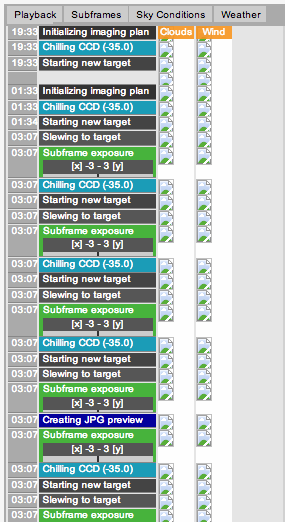
Here is where the observatory is located:
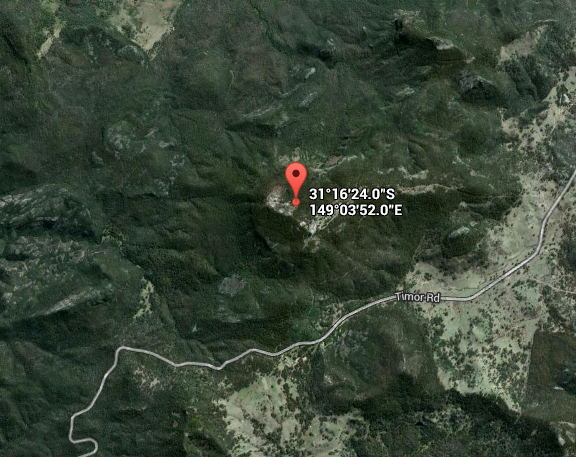
Here's a photo of the observatory.

Another photo of it.

You can see 3 of the telescopes at the observatory, including the one i used in this photo:
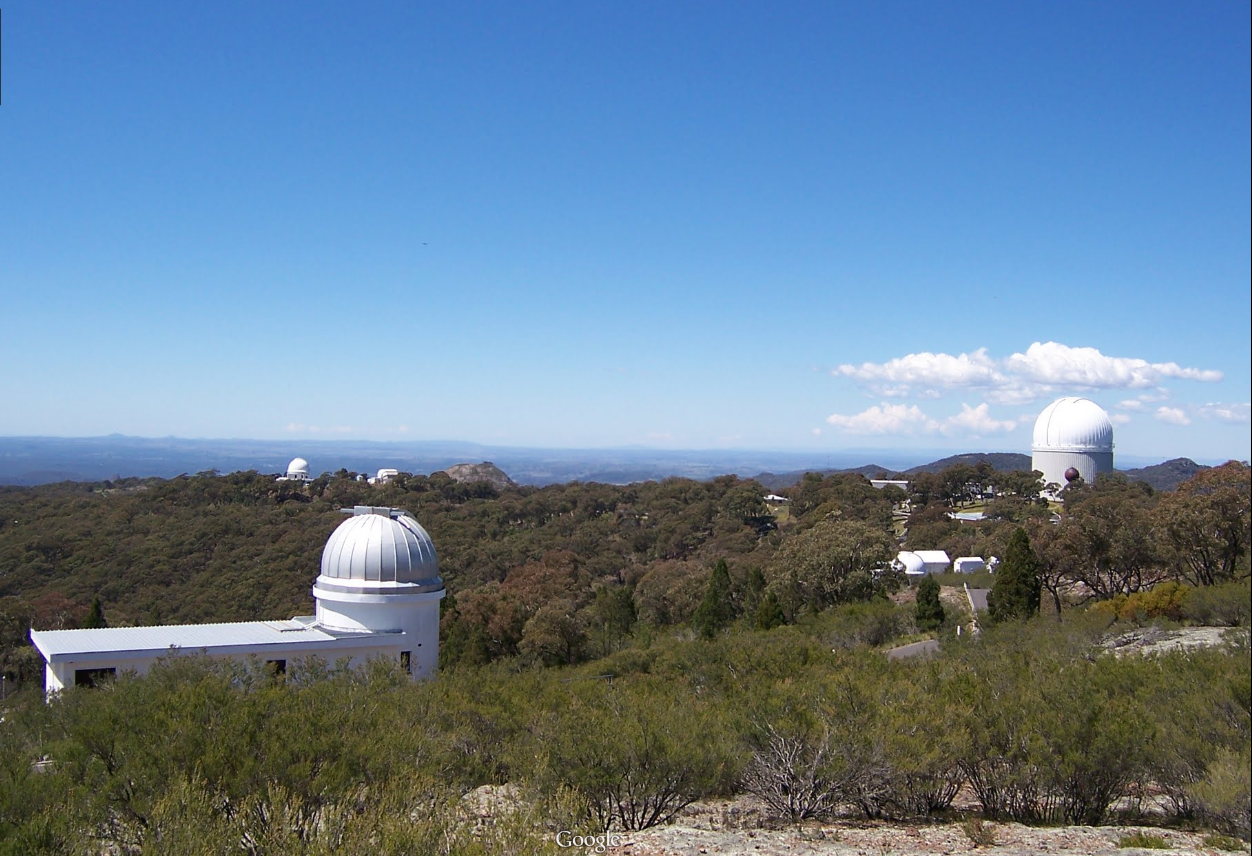
And a beautiful sunset is always a welcome sight. It means the real show is about to begin!
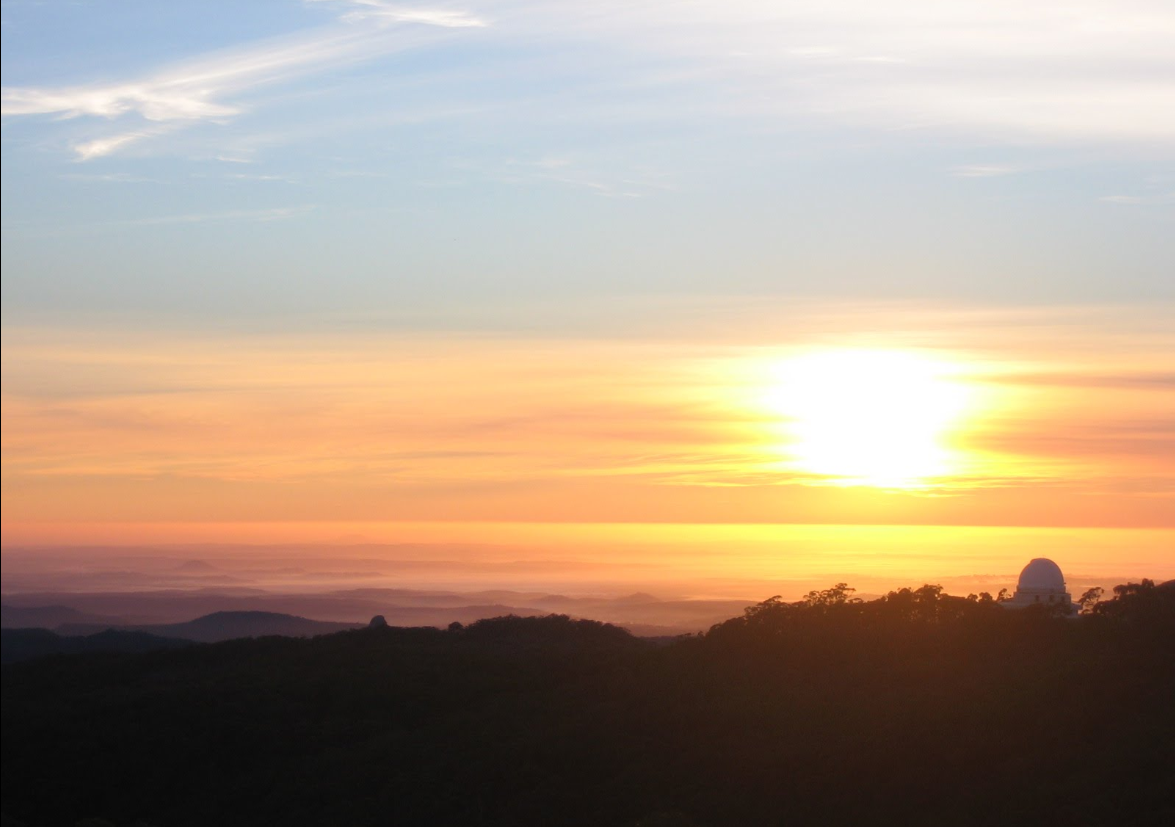
With regards to exoplanets, this telescope is being used as part of a program to provide stars for the input catalog (list of stars to be examined) of NASA's TESS planet hunting space telescope mission
TESS will be similar to Kepler in that it will study stars for transiting planets but unlike Kepler which looked at a field of stars whose average distance was around 600 light years away, TESS will look at all of the nearest stars for planets, including, you guessed it, Zeta 1 and Zeta 2 Reticuli as well as Tau Ceti, 82 Eridani, Alpha Centauri, etc....
The UKST is also involved in the RAdial Velocity Experiment (RAVE) to measure the radial velocities and metallicities of up to 1 million stars in our Milky Way Galaxy which is a precursor to the recently launched GAIA mission by the European Space Agency.
It has also been used to find near earth asteroids.
I hope this helps answer your question.
To see what goes on behind the scenes at an observatory, in this case, among planet hunters looking to take images of young planets around another star, peep this video:
edit on 6-3-2014 by JadeStar because: (no reason given)
stormbringer1701
Ross 54
I now see that the triple alpha process involving helium and beryllium is not applicable to stars like Zeta 1 and Zeta 2 Reticuli, still on the main sequence. The deficiency of beryllium appears to have nothing to do with any supposed astro-engineering on those stars.
I do still maintain that the very gradual brightening of a main sequence star appears likely to make formerly habitable planets, unlivable, long before their star leaves the main sequence. Some technological means of rejuvenating a star, and preventing its further brightening beyond a certain point would seem to be very desirable, if it could me managed.
The contradictory age indicators in the stars Zeta 1 and Zeta 2 Reticuli seem to hint at such a rejuvenation. Indeed, given the expected evolutionary track of a G type star, it seems essential in such stars with a reputed age of 8 billion years, if they have inhabited planets that are to remain inhabited.edit on 5-3-2014 by Ross 54 because: edited for clarity
well on the bright side even some of us primitive earthlings are thinking about how stellar scale engineering could work. like lots and lots and lots (etc) of micro scale wormholes could be used to diffuse stuff (like fresh hydrogen from molecular clouds) not only into stars but into the cores of tectonically and magnetically dead worlds. you could use them to diffuse thorium and uranium in a safe way into the core and mantle to melt the mantle and get a dead world jump started.
It isn't essential at this point that we understand the details of the process of stellar rejuvenation. Looking for the possible results of it in certain stars is quite challenging it itself, and perhaps quite illuminating.
We have good support for the advanced age of the Zeta Reticuli stars. Besides their association with a moving group of 8 billion year old stars, we have their slow rotation. Stars slow their rotation as they age, due to tidal and magnetic braking. The average rotation speed of G class stars is ~ 12 kilometers per second. That of the Sun, a little over 7. Those of the ZR twin stars are under 2 km/sec. They're pretty obviously quite old, and really slowing down.
We also have their youthful traits, which I mentioned above, to deal with. We will have to attend to all the data, contradictory though it is, in order to resolve this paradox.
I couldn't find another good explanation for the solid, yet contradictory age indications, hence my 'thinking outside the box' suggestion about astroengineering. It doesn't seem too unreasonable to suppose that a couple of sun-like stars that are probably three billion years older than our own could play host to a remarkably advanced and powerful civilization.
We already engineer the flow of some of our largest rivers to suit our ends. Given millions of years to learn how, why shouldn't it be possible to control a star?
edit on 6-3-2014 by Ross 54 because: Added information
reply to post by JadeStar
That is really incredible. As a photographer, I found all of the info you provided fascinating.
I'm guessing the CCD is cooled in order to eliminate as much noise from the image as possible?
That is really incredible. As a photographer, I found all of the info you provided fascinating.
I'm guessing the CCD is cooled in order to eliminate as much noise from the image as possible?
As has been mentioned before, having a planet around a star is not necessarily a necessary component of alien habitation. There are any number of
reasons why an alien species might claim this as their "home," even though it's perhaps only a stopping point in a long system of wormhole
highways, and might just have an artificial way station there.
There's also the possibility that if an alien species is able to harness enough power to move between stars, they might also have the power to "cloak" their planet to keep it from being attacked by even more powerful predatory species.
Of course, the whole notion of Zeta Reticuli being an important star system springs from a hinky interpretation of the Betty Hill star map. A supposed momentary glimpse of a star map recalled quite a bit later under regressive hypnosis and drawn by someone fairly unskilled in graphic arts. Not exactly a lot to base a whole religion on.
There's also the possibility that if an alien species is able to harness enough power to move between stars, they might also have the power to "cloak" their planet to keep it from being attacked by even more powerful predatory species.
Of course, the whole notion of Zeta Reticuli being an important star system springs from a hinky interpretation of the Betty Hill star map. A supposed momentary glimpse of a star map recalled quite a bit later under regressive hypnosis and drawn by someone fairly unskilled in graphic arts. Not exactly a lot to base a whole religion on.
lovebeck
reply to post by JadeStar
That is really incredible. As a photographer, I found all of the info you provided fascinating.
Thanks!
I'm guessing the CCD is cooled in order to eliminate as much noise from the image as possible?
Yes. Chilling the CCD is to reduce overall noise. This is especially necessary if one is gathering light in the near-infrared. By the way there are amateurs who have some pretty advanced CCD set ups who use liquid nitrogen at home too.
Blue Shift
owerful predatory species.
Of course, the whole notion of Zeta Reticuli being an important star system springs from a hinky interpretation of the Betty Hill star map. A supposed momentary glimpse of a star map recalled quite a bit later under regressive hypnosis and drawn by someone fairly unskilled in graphic arts. Not exactly a lot to base a whole religion on.
Bolded bits are almost entirely incorrect. I suggest you research Marjorie Fish and Terrence Dickinson's research on the map and read through this thread: The Hill Star Map and Exoplanets.
I've been holding off on posting my video because I've been waiting on Stanton Friedman.
I am a Hill map agnostic. I think there are some interesting things that seem non-random in it which no one would have known in 1961 but I also know that a lot more in the way of data on the stars and any planets around them, must be learned before declaring that map as lending support to the story.
edit on 6-3-2014 by JadeStar because: (no reason given)
JadeStar
Blue Shift
owerful predatory species.
Of course, the whole notion of Zeta Reticuli being an important star system springs from a hinky interpretation of the Betty Hill star map. A supposed momentary glimpse of a star map recalled quite a bit later under regressive hypnosis and drawn by someone fairly unskilled in graphic arts. Not exactly a lot to base a whole religion on.
Bolded bits are almost entirely incorrect. I suggest you research Marjorie Fish and Terrence Dickinson's research on the map and read through this thread: The Hill Star Map and Exoplanets.
I've been holding off on posting my video because I've been waiting on Stanton Friedman.
I am a Hill map agnostic. I think there are some interesting things that seem non-random in it which no one would have known in 1961 but I also know that a lot more in the way of data on the stars and any planets around them, must be learned before declaring that map as lending support to the story.edit on 6-3-2014 by JadeStar because: (no reason given)
Ms Fish may well have done good work - but that's not the issue here.
The issue here is rather whether Betty Hill who was pretty much proven a very bad eye-witness and even had problems often recalling much more simple things (eg. WHO actually walked the dog at one time, she or Barney etc.) is "all-of-a-sudden" supposed to have a practically photographic memory being capable to reproduce a detailed starmap from memory? This is what I simply cannot and won't buy.
See, you and myself and many others are into astronomy. Give me a sheet of a paper and let me draw the most accurate depiction of, say, Orion with a good number of stars in it. (How often have we seen Orion, in real life or on star maps? MANY times). And I guarantee you that nevertheless I would make MANY mistakes placing stars right). But Betty Hill is supposed to have such a good memory? Read the recent books, IN PARTICULAR the last one by S. Friedman where it's just again emphasized that Betty really was a bad eye witness. Just saying....
Thank you for presenting me some very interesting and entertaining information about a star system which I also think is very likely to contain a
habitable planet and subsequently intelligent life. Those two stars always fascinated me and it is lovely to see professionals like yourself share
this fascination with me. Keep up the good work, and if you happen to spot a huge UFO emerging from Zeta Reticuli and coming towards Earth be sure to
let us humble readers know first!
edit on 6/3/14 by Cerdofuego because: (no reason given)
reply to post by JadeStar
Fascinating, fascinating stuff JS. If only all posts on ATS were as well written and well presented as this. Duly awarded a S&F.
You did a great job of presenting the facts to the likes of me.
------------------------------------------------------------------------------------------------------------------------------------------------------ ---
Can I ask a question about the apparent lack of 'gas giants' in the ZT system?
Would this not make any earth like planets more susceptible to comet and asteroid impacts with no larger planets mopping up?
Thanks again for a wonderful thread MM
Fascinating, fascinating stuff JS. If only all posts on ATS were as well written and well presented as this. Duly awarded a S&F.
You did a great job of presenting the facts to the likes of me.
------------------------------------------------------------------------------------------------------------------------------------------------------ ---
Can I ask a question about the apparent lack of 'gas giants' in the ZT system?
Would this not make any earth like planets more susceptible to comet and asteroid impacts with no larger planets mopping up?
Thanks again for a wonderful thread MM
edit on 6/3/14 by mirageman because: (no reason given)
reply to post by mirageman
I have a theory. Ok Zeta Retcicula has had alot of reports of UFO and Alien activity right back to Apollo 1. As well as Thuban. Further more im pretty sure these two systems have alot of wars with each other.
So here are my theory. What if this site is more then a conspiracy site. What if this site is used by these two star systems to find out how much information the general public of earth really know? It would not be that hard to have access to earth's internet from another star system if you were an advance alien species. With the right technology and computer protocols you could easily connect your way in to earths communication network. Thats if our government has not already handed over the keys into earths communication systems. It really is this simple. Any individual that has sensitive information on there pc that they are not ment to have, bamb computer virus, hardware failure, corrupt files of were the data is stored done through firmware viruses. The list of possibilitys goes on for Zeta Retcicula. Now for the Thuban star system AKA Draconian star system, home of the notorious multie dimensional reptilians. Same way of monitoring this site then when they come accross people who know to much they simply do there workings in the high dimensions. They pretty much follow us around from with in a astral relm. They can alter our thoughts, behavior, decisions, personality and interest, remove information from our brains, insert 4th dimensional chips into us that cant be detected by any 3rd dimensional technology. These chips can be used to track you at any time or bring on pain, head aches or strange cardio rythem anytime you begin to have thoughts of wanting to seek information you are not suppose to know.
I have in the pass from many scorces heard that black budget military technology is 80 years ahead of commercial prototype technology. So if our government hlit would still be quite primitive to technology of other alien species.
This is just a theory.
It just seems to be that the information that circles this site even thoe its above top secret its not the crown jewel. Every now and then we might see something on this site that blows our mind but its usually very quick to either be alted or discredited. It kinda like this site remains somewhat damp to keep us on edge but dull at the same time. And the same goes for other sites to.
I have a theory. Ok Zeta Retcicula has had alot of reports of UFO and Alien activity right back to Apollo 1. As well as Thuban. Further more im pretty sure these two systems have alot of wars with each other.
So here are my theory. What if this site is more then a conspiracy site. What if this site is used by these two star systems to find out how much information the general public of earth really know? It would not be that hard to have access to earth's internet from another star system if you were an advance alien species. With the right technology and computer protocols you could easily connect your way in to earths communication network. Thats if our government has not already handed over the keys into earths communication systems. It really is this simple. Any individual that has sensitive information on there pc that they are not ment to have, bamb computer virus, hardware failure, corrupt files of were the data is stored done through firmware viruses. The list of possibilitys goes on for Zeta Retcicula. Now for the Thuban star system AKA Draconian star system, home of the notorious multie dimensional reptilians. Same way of monitoring this site then when they come accross people who know to much they simply do there workings in the high dimensions. They pretty much follow us around from with in a astral relm. They can alter our thoughts, behavior, decisions, personality and interest, remove information from our brains, insert 4th dimensional chips into us that cant be detected by any 3rd dimensional technology. These chips can be used to track you at any time or bring on pain, head aches or strange cardio rythem anytime you begin to have thoughts of wanting to seek information you are not suppose to know.
I have in the pass from many scorces heard that black budget military technology is 80 years ahead of commercial prototype technology. So if our government hlit would still be quite primitive to technology of other alien species.
This is just a theory.
It just seems to be that the information that circles this site even thoe its above top secret its not the crown jewel. Every now and then we might see something on this site that blows our mind but its usually very quick to either be alted or discredited. It kinda like this site remains somewhat damp to keep us on edge but dull at the same time. And the same goes for other sites to.
edit on 6-3-2014 by Abavs because: (no reason
given)
Some of the myths around Zeta Reticuli claim there is also a third star, and I remember reading somewhere that based on what we've seen of the stars
movements there's some evidence for a small dim third star.
Though I believe Betty Hills map excluded the third star. So the existence of such a thing would likely either prove or disprove the map.
Is there any truth to that?
Though I believe Betty Hills map excluded the third star. So the existence of such a thing would likely either prove or disprove the map.
Is there any truth to that?
Well-informed, very intelligent post! I do want to add in a comment however regarding the Greys. From what I have heard from some researchers (as per
radio talk shows I've heard online and after talking to an iCAR alien researcher about something I saw once), the black "eyes" are in fact actually
patches. I have been asked by this individual to not reveal what their eyes actually look like, as it is "alien criteria" I would be revealing
(which is there to tell if someone's bsing a story or they're telling the truth type of deal). So the black "eyes" you see are in fact not their
real eyes, which is something I felt compelled to point out to everyone. Whether that makes a big difference in the consistency of the Greys coming
from this star system or not due to lighting and whatnot is up to you to decide...
Ross 54
stormbringer1701
Ross 54
I now see that the triple alpha process involving helium and beryllium is not applicable to stars like Zeta 1 and Zeta 2 Reticuli, still on the main sequence. The deficiency of beryllium appears to have nothing to do with any supposed astro-engineering on those stars.
I do still maintain that the very gradual brightening of a main sequence star appears likely to make formerly habitable planets, unlivable, long before their star leaves the main sequence. Some technological means of rejuvenating a star, and preventing its further brightening beyond a certain point would seem to be very desirable, if it could me managed.
The contradictory age indicators in the stars Zeta 1 and Zeta 2 Reticuli seem to hint at such a rejuvenation. Indeed, given the expected evolutionary track of a G type star, it seems essential in such stars with a reputed age of 8 billion years, if they have inhabited planets that are to remain inhabited.edit on 5-3-2014 by Ross 54 because: edited for clarity
well on the bright side even some of us primitive earthlings are thinking about how stellar scale engineering could work. like lots and lots and lots (etc) of micro scale wormholes could be used to diffuse stuff (like fresh hydrogen from molecular clouds) not only into stars but into the cores of tectonically and magnetically dead worlds. you could use them to diffuse thorium and uranium in a safe way into the core and mantle to melt the mantle and get a dead world jump started.
It isn't essential at this point that we understand the details of the process of stellar rejuvenation. Looking for the possible results of it in certain stars is quite challenging it itself, and perhaps quite illuminating.
We have good support for the advanced age of the Zeta Reticuli stars. Besides their association with a moving group of 8 billion year old stars, we have their slow rotation. Stars slow their rotation as they age, due to tidal and magnetic braking. The average rotation speed of G class stars is ~ 12 kilometers per second. That of the Sun, a little over 7. Those of the ZR twin stars are under 2 km/sec. They're pretty obviously quite old, and really slowing down.
We also have their youthful traits, which I mentioned above, to deal with. We will have to attend to all the data, contradictory though it is, in order to resolve this paradox.
I couldn't find another good explanation for the solid, yet contradictory age indications, hence my 'thinking outside the box' suggestion about astroengineering. It doesn't seem too unreasonable to suppose that a couple of sun-like stars that are probably three billion years older than our own could play host to a remarkably advanced and powerful civilization.
We already engineer the flow of some of our largest rivers to suit our ends. Given millions of years to learn how, why shouldn't it be possible to control a star?edit on 6-3-2014 by Ross 54 because: Added information
very. i mean we haven't thought of everything even in the realm of wild speculation and fantasy. you could even have tech to make artificial stars out of jupiter class and higher planets by putting ultra-dense quasi matter into it to increase gravity, pressure and temperature or at least a equatorial band of fusion around them. you could posit worm hole diffusion techniques a sufficiently advanced civilization might be able to do something very like "Fiat Lux!" pulling virtual stuff into reality from the vacuum. or moving stars and planets about at will. or cannibalizing stars of unburnt hydrogen.
for a few illustrations of some of these wild fantastical ideas look at www.orionsarm.com...
new topics
-
Shane Gillis commercial
Jokes, Puns, & Pranks: 2 hours ago -
Elon Says It’s ‘Likely’ He Buys Tanking MSNBC
Political Ideology: 4 hours ago -
Montelukast affects brain, caused 5 year old to attempt suicide
Medical Issues & Conspiracies: 5 hours ago -
Jaguar Rebrand Video Causes "WTF?" Moment - Seriously Weird
Automotive Discussion: 7 hours ago -
Let's start a conspiracy
General Conspiracies: 7 hours ago -
What Joe Rogan said Vs The View
Dissecting Disinformation: 10 hours ago -
Biden's "Reckless" Decision To Escalate Russia-Ukraine War
World War Three: 11 hours ago
top topics
-
Biden's "Reckless" Decision To Escalate Russia-Ukraine War
World War Three: 11 hours ago, 16 flags -
Jaguar Rebrand Video Causes "WTF?" Moment - Seriously Weird
Automotive Discussion: 7 hours ago, 14 flags -
Elon Says It’s ‘Likely’ He Buys Tanking MSNBC
Political Ideology: 4 hours ago, 14 flags -
What Joe Rogan said Vs The View
Dissecting Disinformation: 10 hours ago, 11 flags -
Montelukast affects brain, caused 5 year old to attempt suicide
Medical Issues & Conspiracies: 5 hours ago, 11 flags -
Shane Gillis commercial
Jokes, Puns, & Pranks: 2 hours ago, 2 flags -
Let's start a conspiracy
General Conspiracies: 7 hours ago, 1 flags
active topics
-
Is Russia Using a New Type of Beam Weapon Against Ukraine?
Weaponry • 22 • : Zaphod58 -
Putin will warn civilians in targeted areas
World War Three • 48 • : annonentity -
Here is why Western leaders in NATO have zero fear of nuclear warfare. At all. Zero.
World War Three • 7 • : yuppa -
Elon Says It’s ‘Likely’ He Buys Tanking MSNBC
Political Ideology • 60 • : watchitburn -
Montelukast affects brain, caused 5 year old to attempt suicide
Medical Issues & Conspiracies • 6 • : RazorV66 -
Well, here we go red lines crossed Biden gives the go ahead to use long range missiles
World War Three • 326 • : yuppa -
Well we know Putins ICBMs won't fail in their silos
World War Three • 171 • : yuppa -
Jaguar Rebrand Video Causes "WTF?" Moment - Seriously Weird
Automotive Discussion • 16 • : BeyondKnowledge3 -
-@TH3WH17ERABB17- -Q- ---TIME TO SHOW THE WORLD--- -Part- --44--
Dissecting Disinformation • 3348 • : Crazierfox -
Biden's "Reckless" Decision To Escalate Russia-Ukraine War
World War Three • 119 • : KrustyKrab
